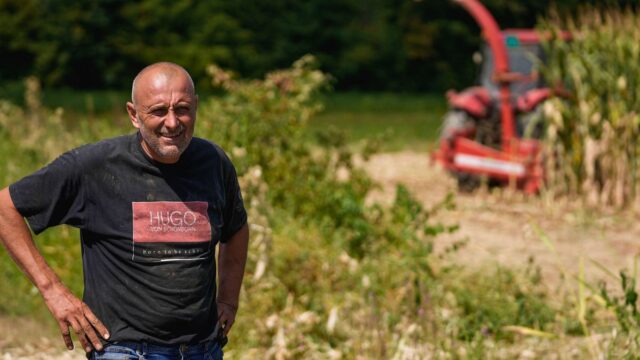Residents of Serbia’s lithium-rich region vow to block EU-backed mining.
“All of us here are ready to lose our lives,” says Serbian farmer Zlatko Kokanović. This 48 year old man does not want a lithium mine in your place of residence and will do everything possible to prevent it from opening. “They can shoot. It’s the only way to let them open the mine“he points out.
At stake is a lush agricultural valley in western Serbia that is home to one of the richest lithium deposits in Europea precious metal used to make batteries for electric cars and which is crucial to the global transition to green energy.
The existence or not of a mine in the valley has become one of the most controversial topics in the Balkan nation, triggering protests of thousands of people in a challenge to populist president Aleksandar Vučić.
While the Government insists that the mine represents an opportunity for economic development, critics say it would cause pollution irreparable in the valley of Jadar, especially in the groundwater reserves, croplands and two small rivers that run through the valley.
Thousands of people are expected to participate in a great concentration this Saturday, August 10 in the capital, Belgrade, to call for a law that prohibits lithium extraction anywhere in Serbia.
We were raised on this land and we will die on this land
Kokanović will be there with his group ‘Ne Damo Jadar’ (‘We will not give up Jadar’).
“We are not interested in its benefits. We grew up on this land and we will die on this earth“, says Kokanović, a farmer and father of five children. “This land is not anyone’s property, it belongs to our children,” he adds.
Exploration of the deposits lithium and boro of the Jadar Valley has been in charge of the multinational mining company Rio Tinto Group for 20 years. The company has developed plans to open a mine.
Throughout its 150 years of history, the company Rio Tinto has faced corruption accusationsenvironmental degradation and human rights abuses at its excavations, a record that has alarmed residents in Jadar and environmental protection groups in Serbia.
Mass protests in 2021 and 2022 forced the Serbian Government totemporarily suspend mine planonly to reactivate it in July before signing a memorandum on “critical raw materials” with the EU in the presence of German Chancellor Olaf Scholz.
Jadar Valley mine could make Serbia a world-leading source of lithium
Dubravka Djedović Handanović, Minister of Mining and Energy of Serbia, says that the Jadar Valley contains about 158 million tons of lithiumthat is, around 17% of the total estimated reserves on the European continent.
Jadar, he says, is “one of the best explored lithium deposits in Europe and probably one of the best in the world“, and could “place Serbia as the leading country not only in Europe, but also in the world” in regards to the fight against climate change.
Djedović Handanović’s signature appears on the EU memorandum that foresees a “strategic partnership” on sustainable raw materials, supply chains of batteries y electric vehicles. The plan is not only to export raw materials, but also promote new technologies in Serbia.
“Any possible excavation will comply with the strictest EU standards,” says Handanović. The policy promises that “we will not do anything if it has an impact so negative that it causes harml”.
“In that case, the project will not be developed,” he says, complaining about the “disinformation” supposedly spread about the project.
In response, the Government has created a call center and a medical team to monitor possible health riskshe states.
Are the risks of lithium mining greater than the benefits?
Although it could bring Serbia closer to the EU, and contribute to reduce dependence on lithium from Chinacritics maintain that the risks of lithium extraction continue to outweigh the benefits.
Serbia is a candidate country for EU membership, but also maintains close ties with Russia and China. The ‘Asian giant’ has the largest copper mine in the Balkan countrylocated in eastern Serbia.
Dragana Djordjević, a research professor at the University of Belgrade and an expert in environmental chemistry, is part of a group of Serbian researchers who discovered in a study that the soil of the Jadar Valley had already suffered damage during the exploration.
Jadar, Djordjević points out, is an agricultural area with groundwater and rivers that often overflow and could carry any toxic material downstream. The mine poses “an enormous risk for the entire region,” he says.
Rio Tinto Group has stated that it will build an underground mine in line with EU safety standards. In an email, the company’s Serbian subsidiary states that “encourages fact-based public dialogue” and cites a draft environmental study that urges those affected to submit their observations.
When could Serbia’s lithium mine open?
Officials have said the mine would not open before 2028. Vučić has called the current protests against lithiumpolicies orchestrated by foreign powers unspecified and directed against him and the Government”.
In the valley, the properties of the Rio Tinto Sava company are marked with signs “no trespassing“and its entrances are sealed. mina It would encompass about 200 hectares of the sprawling valley, dotted with corn and soybean fields.
Vladan Jakovljević, in his 60s, lives in the village of Stupnica, in the hills overlooking the valley. Nor does he want to give up his way of life, his hives and a healthy environment for your family. If the mine is opened, he states, “there would be no life for us“.







